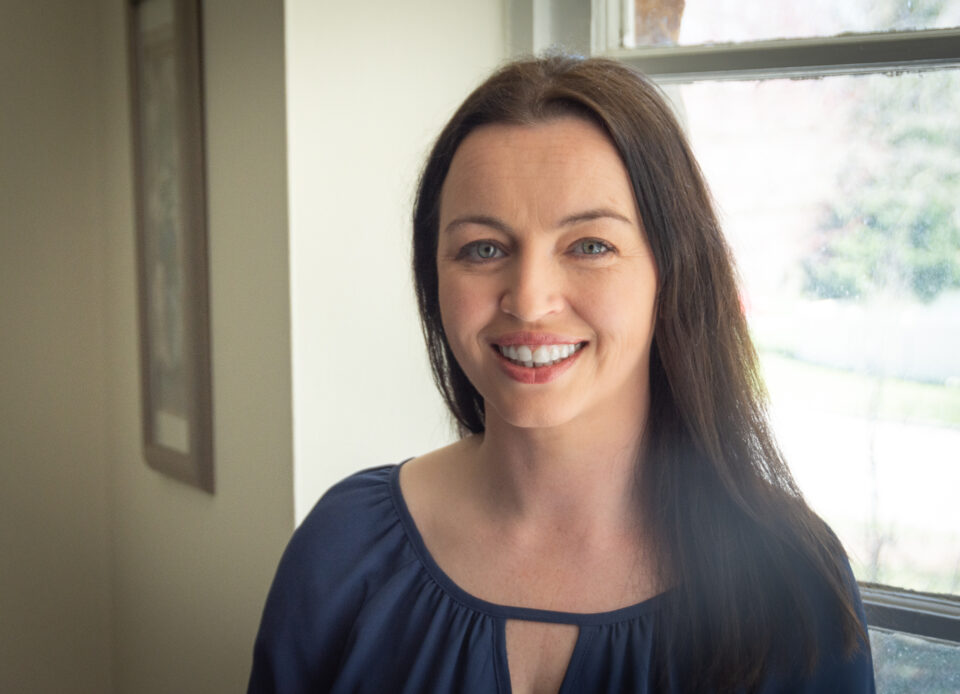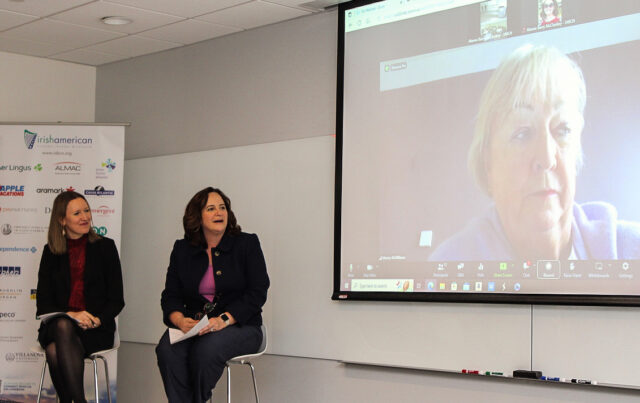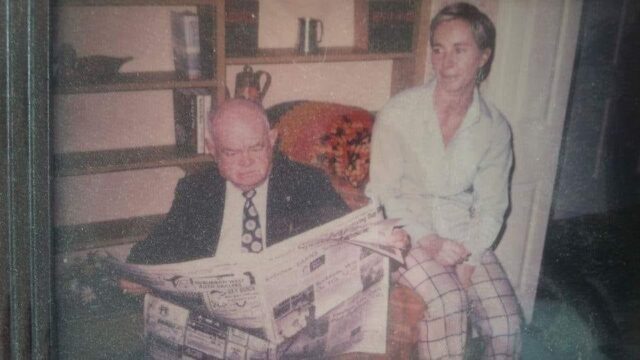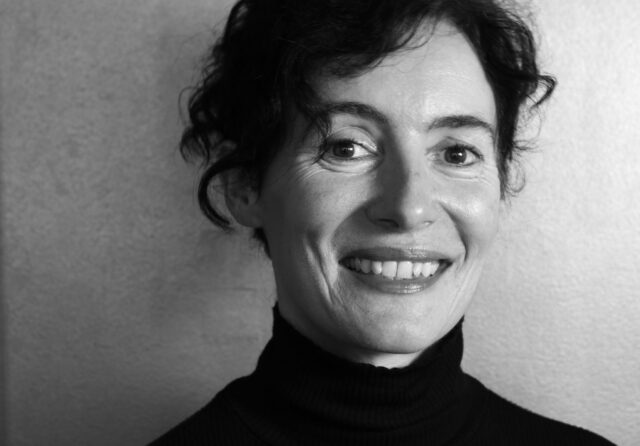Growing up in Gweedore, the heart of Donegal’s Irish speaking region known as The Gaeltacht, Sorcha Ní Ghallachóir’s first encounter with the English language was a children’s television program about a red-haired, red-cheeked puppet named Bosco. She watched, mystified. He was speaking a foreign language.
“To me it was double Dutch,” recalls Ní Ghallachóir. “I had no idea what he was saying except for the word or two he said in Irish.”
Though Irish is the official language of Ireland and 1.2 million people claim to speak it, less than two percent actually use Irish on a daily basis. Most of them are like Ní Ghallachóir, whose entire family—parents, grandparents, aunts, uncles and siblings—spoke Irish as a first language.
“My thought process is in Irish. I speak to my friends in Irish. It’s spoken Irish that comes naturally,” she says,
Today, Ní Ghallachóir is far-removed from the Gaeltacht but not far from her mother tongue. For the past nearly eight months she has been a Fulbright Foreign Language Teaching Assistant at Villanova University, splitting her time between teaching the Irish language to students at Villanova and in St. Joseph University’s fledgling Irish Studies program.
Since she graduated with a honors bachelor degree in early and modern Irish and a postgraduate diploma in education from Trinity College, the Irish language has become her her career and her passion. More than words, the Irish language—considered “definitely endangered” by the United Nations Educational, Scientific and Cultural Organization (UNESCO)–is a symbol of Irish identity, she says.
“it’s a part of our heritage,” says Ní Ghallachóir. “If it goes, how are we different from the people across the pond?”
Her passion was inspired by a poem she read when she was seven. Written by Padraig Pearse, considered the architect of the 1916 Easter Uprising, “The Mother,” expresses “a mother’s grief for her sons who were going to die.”
Margaret Pearse would lose two sons to the fight for Irish independence. Patrick, a teacher and barrister, was shot on July 3, 1916, for his role in the uprising; his brother, Willie, was executed the following day.
“It really impacted me,” says Ní Ghallachóir. “I kept asking, why was he killed? What had he done wrong?”
Executed for his role in the Easter Sunday revolution–Pearse was both first president of the provisional government of the Irish republic and commander in chief of the Irish forces—he began his nationalist journey as an advocate of a peaceful cultural revolution and as a fervent language activist. Pearse learned Irish in a Christian Brothers’ school and became a member at the age of 16 of the Gaelic League, founded in 1893 to help preserve Irish language and culture. Pearse came to believe that the Irish language was key to Irish identity and that Ireland, to be free, must also be Gaelic.
In his brief career in the law, the only case he ever tried involved a poet and songwriter from Creeslough, County Donegal, who was fined for having his name displayed “illegibly”—in Irish—on his donkey cart. Though he lost the case, it became a symbol of the Irish struggle to free itself of British domination, starting with language. “It was in effect decided that Irish is a foreign language on the same level with Yiddish,” Pearse wrote of the decision.
Ní Ghallachóir remembers even at the age of seven “having an understanding of the strong value and worth of my language,” she says. “It’s ours, it’s our birthright. People sacrificed their lives for it. That’s stayed with me and it will stay with me forever.”
She’s seen that same passion for the language in some of her students and others she’s met during her time in Philadelphia. “The pride I’ve seen in people here is amazing,” she says. She met one teenager who taught himself Irish through YouTube. “He actually taught himself out of a sense of pride in being Irish. If a 16-year-old can do this, anyone can.”
It was one of things that inspired her to start a Irish conversation event she knew well when she lived in Dublin, where she is an Irish teacher and drama/director producer, at St. Michael’s College, a secondary school.
“The ‘Pop-Up Gaeltacht’ was started by a couple of Irish speakers in Dublin,” says Ní Ghallachóir. “On the last Thursday of every month, Irish speakers descend on a bar where they can have conversations in Irish. It attracts everyone from beginners to the fluent, people of all ages.”
Taoiseach Leo Varadkar is an occasional attendee, as are other Irish speaking celebrities. “It’s always a most enjoyable night,” she says.
It occurred to her that a Pop-Up Gaeltacht might be welcome in the US where, according to US Census records, about 20,000 people reported speaking Irish at home. (Many more may speak some Irish words unknowingly, according to the late Professor Daniel Cassidy, author of How The Irish Invented Slang. Among American slang words, Cassidy found some with a soundalike in Irish, such as “scam,” from ‘S cam e, meaning a trick; blowhard from Bealu h-ard, meaning loud speaking; and Holy Mackerel, from Mac Riuil,meaning royal son.)
Outside of a college setting, it’s hard for Irish speakers to practice their conversation, a must to become fluent in a language. Ní Ghallachóir was discussing this need one night while out with friends at The Crossbar, a pub in Havertown, when the bartender suddenly said, “You can do it here.”
So on March 19, 50 or 60 people descended on The Crossbar for an evening of camaraderie and Gaelige. “One teacher brought his students,” she says. “I didn’t realize there were that many Irish speakers in Philadelphia.”’
(A local Irish speakers group, Gaeilgeoiri Philadelphia has held similar conversation meet-ups at The Plough and the Stars in Philadelphia and has Zoom meetings every Saturday.)
Ní Ghallachóir is planning a second Pop-Up Gaeltacht on Sunday, April 30, between 2 and 6 PM at The Crossbar, 2225 East Darby Road, Havertown. Then she has to face leaving a place she has come to love as her Fulbright grant comes to an end. “People here have been so great, they really helped me settle in,” she says. “I fit in like a glove.”
At home, she’s a member of na Gaelic Óga C.L.G., Dublin’s only only Irish speaking Gaelic Athletic Association club, and in her time here she has gotten involved with the Philadelphia GAA. She joined the Donegal Association of Philadelphia as well.
She sees Irish Americans as key to help keeping the language alive. After all, she says, they’re keeping many other traditions alive. “They have a sense of pride in all things Irish and realize how important to hold onto their heritage, she says. In fact, she’s felt so at home in the Philadelphia area, “I really find it hard to be homesick here!”
What could keep her or bring her back is the idea she’s exploring of introducing Irish as a language option in US high schools, particularly in areas where there are many Irish and Irish-Americans. One high school principal is already interested. “It’s only going to take one school to set that off,” she says. “This is how the Irish language will be saved.”
How Can You Learn Irish?
Daltaí na Gaeilge (Students of Irish) is a nonprofit founded in 1981 to promote and teach the Irish language. Along with offering online instruction and in-person classes, it maintains a list of Irish instructors in the tri-state area (NY-NJ-PA) https://daltai.com/classes/mid-atlantic/




